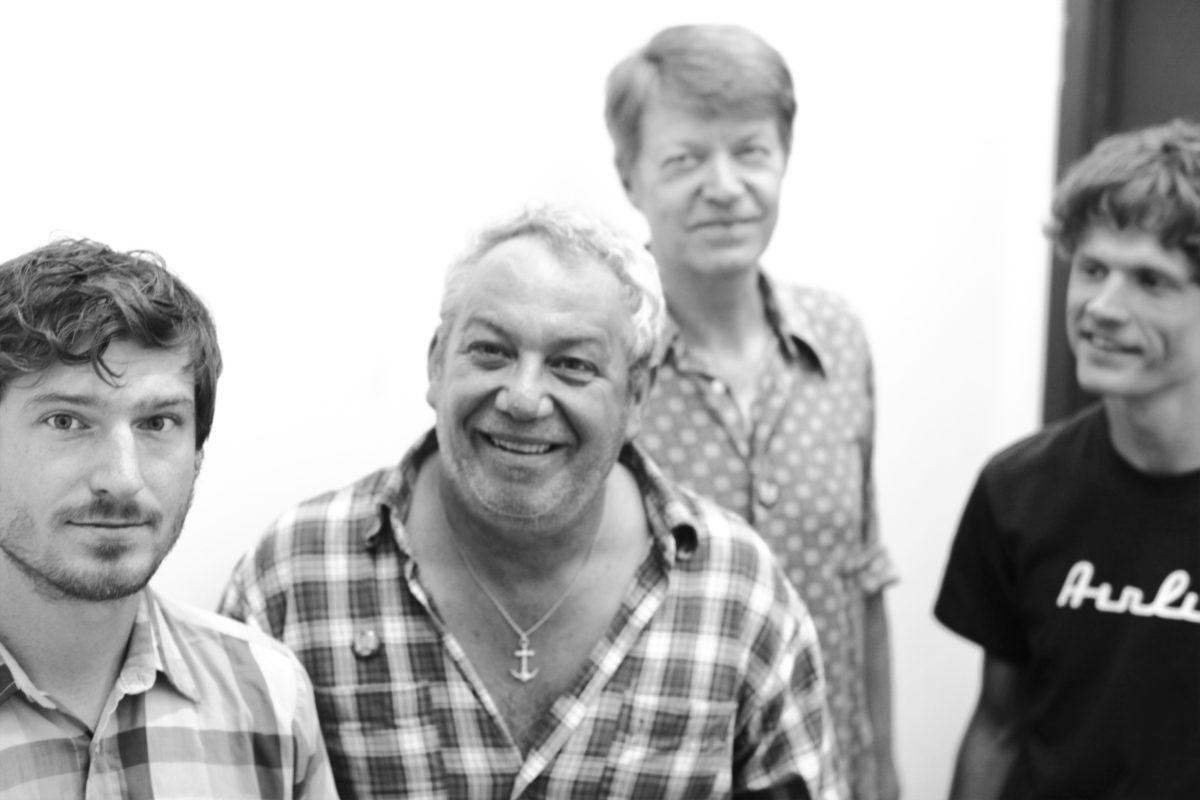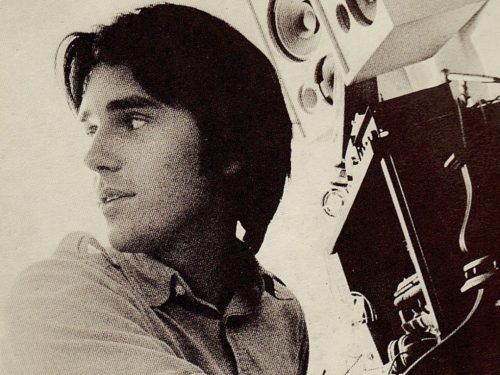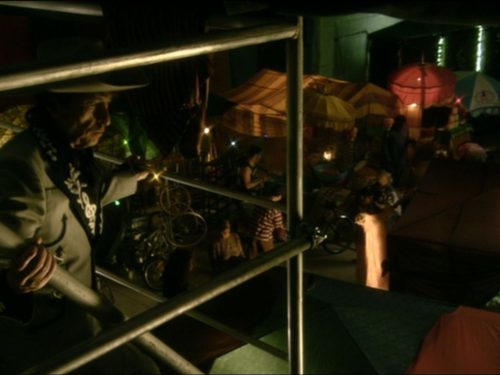Mike Watt is sick of every band he records with on a whim being labeled a “supergroup.” But with most of the recordings he makes with friends, the term is inevitably tossed around by critics as if it’s the only way to describe the music. He thinks the only thing that should matter in music is what comes out of the speakers — not the people who made it.
“When you say things like the supergroup, it seems like the name game; it sounds so self-serving,” Watt said. “You owe it to the listeners to not piss all over them because you have a name that might have been heard by other people.”
Watt is best known as the bassist of the legendary punk band the Minutemen, but he also fronted fIREHOSE and played bass for Iggy Pop and The Stooges for a decade. When his best friend and Minutemen songwriting partner, D. Boon, died in a van accident in 1985, Watt temporarily quit music until his friends convinced him to record again. Since then his career has been fueled by collaboration and he has played with artists ranging from Sonic Youth to Kelly Clarkson.
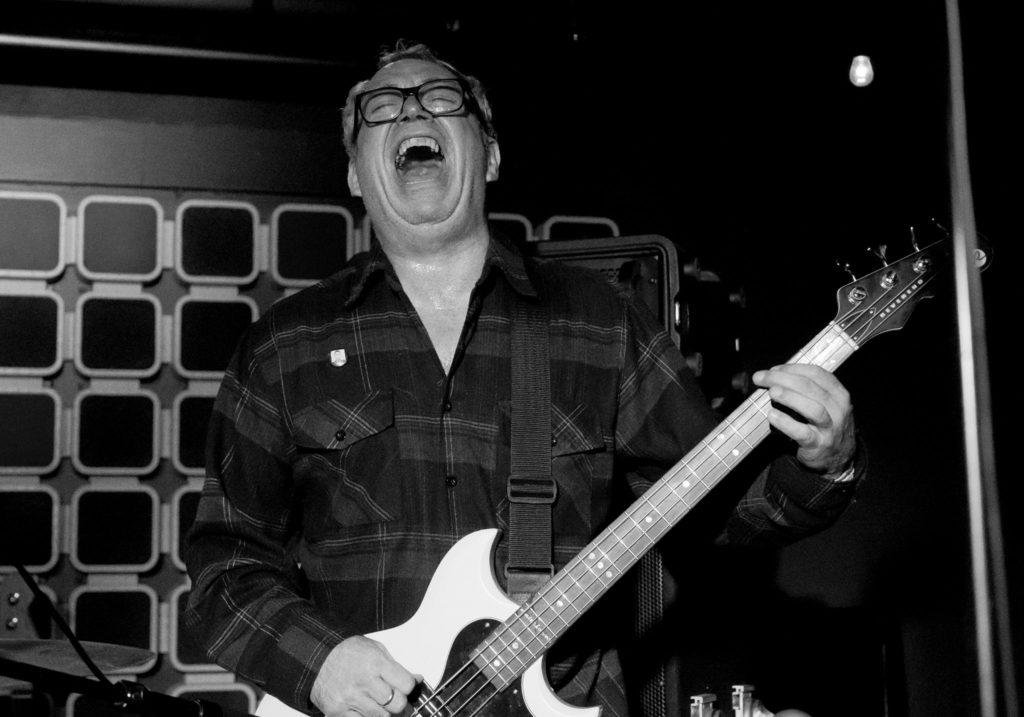
Watt wanted this project (or proj, as he says) to be remembered as an instance of colliding worlds that brought three generations of musicians together. It was also a chance for two inventive guitarists — Nick Reinhart (Tera Melos) and Nels Cline (Wilco, dozens more) — to develop a musical conversation with the formidable rhythm section of Watt and Deerhoof’s Greg Saunier. Borrowing a phrase from a Richard Meltzer poem (and Watt collaboration, Spielgusher), Watt gave the group a name that would direct listener focus to the music instead of the personnel: Big Walnuts Yonder.
The idea for Big Walnuts Yonder began in 2008 when Watt and Nick Reinhart were talking backstage at a Tera Melos show in Dublin, Ireland. Reinhart grew up a Minutemen fan and treasured hearing Watt’s stories about the early days of SST Records, the Minutemen and touring with Black Flag. “With Mike, it’s almost like he’s holding court,” Reinhart said. “You just want to hear Mike talk.” He had been listening to Watt’s first rock opera, 1997’s Contemplating the Engine Room, in which Nels Cline plays lead guitar. He was curious how Cline created his part for “The Boilerman.” In lieu of a colorful tale, Watt simply said, “If you really want to know [Cline], play with him.”
“Of course I’m just like, ‘What? What do you mean?’” Reinhart said. “Me play with Nels? I guess I wasn’t even sure if he was serious or not.”
Tera Melos had shared bills with fIREHOSE before, but actually forming a band with the men he grew up listening to seemed like the stuff of dreams. Born in 1983, Reinhart said he was “just a little fucking blob in a crib crying” when Nels Cline and Mike Watt were years into their musical careers — Watt with the Minutemen, Cline as a jack-of-all-trades jazz, classical and rock guitarist. Their combined output includes hundreds of albums recorded and thousands of shows played since Reinhart took his first steps — though they have hardly slowed down since Reinhart formed the Sacramento math-punk band Tera Melos in 2004.
Watt and Cline first met in 1984 or 1985 when the Charlie Haden Liberation Orchestra opened for the Minutemen in Santa Monica, California. They exchanged few words that night but were formally introduced years later at a Rhino Records party. This led to their first recordings together: Watt played bass on The Nels Cline Trio’s B-side “The Rite”; Cline added a solo to fIREHOSE’s “4.29.92.” Since then, Cline has appeared on Watt’s star-studded first solo album, 1995’s Ball-Hog or Tug Boat? and on Contemplating the Engine Room. They have also collaborated in groups including Banyan, Floored By Four (where Cline met his wife, Yuka Honda) and Brother’s Sister’s Daughter. Watt said Cline is the type of musician who makes others “dream big and play big.”
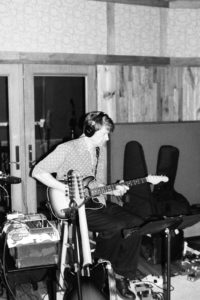
Drawing inspiration from the formation of Brother’s Sister’s Daughter, which began when Watt’s friend Shimizu Hirotaka asked about Cline, Watt decided to take a chance with Reinhart.
Cline had never heard of Reinhart or Tera Melos before, but he quickly agreed to participate. “All I needed to know was that Watt thought we should play together. That was enough for me.” His one condition: Reinhart had to pick the drummer.
Without hesitation, Reinhart chose Greg Saunier, the inimitable Deerhoof drummer. Since its inception in 1994, Deerhoof has released 14 studio albums, cementing its place as titans of the DIY-indie scene. Pitchfork’s 2005 review of The Runner’s Four called Deerhoof “the best band in the world,” a title that’s hard to refute after witnessing its live show.
“His force behind the drums is so commanding and inspiring and fun and just incredible to watch,” Reinhart said. He had craved to play with Saunier since opening for Deerhoof with an improvised jam with drummer Zach Hill. “Why I would choose him and why he came to mind so quickly was almost a selfish reason. It was like there’s how I could get to play music with Greg — if I’m with fucking Mike Watt and Nels Cline.”
Saunier and Cline were already friends and collaborators. Cline’s group the Geraldine Fibbers had shared bills with Deerhoof in the late ’90s. Coincidentally, Cline took Watt to his first Deerhoof show during the Holdypaws tour — he was initially unimpressed.
Cline reached out to Saunier and the lineup was set.
“It was impossible to say no,” Saunier said. “I knew it was going to be very fun.” His only concern about the project was finding time when all four members could spend a few days in a recording studio together as they lived on opposite coasts and were all involved in multiple projects. It turned out to be a bigger issue than expected. “It felt like a miracle once it finally happened,” he said.
After years of discussion, the group recorded its self-titled album in three days in 2014. Entering with the mindset that this would be a side project, Cline said they approached the record with carte blanche because there was no pre-established band treatise.
“Big Walnuts Yonder was the idea of a band: guys coming together to make an ensemble,” Watt said. “What made it special, different, was the integrity of realizing that — of not trying to be something else. Like Popeye said, ‘I am what I am.’ This band told me that: This is what we are, Watt.”
Six years to discuss, three days to record
After planning the collaboration over email for years, they locked in three days to record in July 2014. They assembled at Tony Maimone’s Studio G in Brooklyn to record the instrumental portions of the album. Saunier called the experience “a crash course in Nick Reinhart, Nels Cline and Mike Watt.” “Nothing can prepare you for spending an entire day with all three of those guys at once,” he said. “I mean what a bunch of nutcases!”
Reinhart recalled walking into the studio on the first day, seeing Mike Watt and realizing that Saunier and Cline would be arriving soon. This project was no longer a dream — it was actually happening. “I remember that being a little intimidating. I know those guys don’t feel that way about each other or about me, but it’s different for me because I’ve grown up listening to those guys. There’s a pressure that I know I need to bring it for them.”
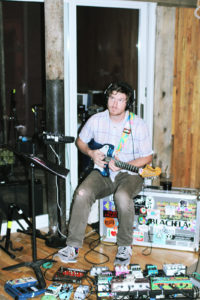
They knew studio time would be limited, so to speed up the composition process, Watt emailed the group eight “bass forms,” or solo bass demos of song structures. These bass forms, alphabetically titled “Tune S” to “Tune Z,” acted as a springboard for his bandmates to add complementary ideas to. “I like to [compose] on bass on purpose for people like Nels Cline because it’s, harmonically, a lot more open,” Watt said. “I remember having people tell me it’s like writing songs on kick drum or writing songs on cymbals. There’s not enough information. That ain’t the case with Nels Cline. He eats it up.”
“Having done this many times with Watt, I’m pretty aware of the fact that if the first impulse is to play big chords and cover up a lot of the space, he’s not going to be happy,” Cline said. “He wants to hear each instrument create its own identity and stay out of the way of the other instruments. It’s a little bit hocketed. So I think that’s why you hear on a lot of his records a crosstalk, or a conversation between the instruments.”
The bass forms were not intended to dictate the band’s sound, but rather, to provide a flexible starting point with a firm foundation. Cline had heard these bass forms, but said it would have been pointless for him and Saunier to enter with concrete ideas. They opted to improvise.
The finished songs retain many of the key themes, structural timing and moods of the original bass form demos, but Watt adapted his bass parts as he and Reinhart traded ideas via email, and as the songs developed in the studio.
“We’ve got three days,” Watt said. “Are you going to make it so intricate, or are you going to set up kinds of worlds that they can populate with their fucking dream beings?”
Having grown up in the age of file sharing, exchanging email demos was a standard practice for Reinhart. Writing an entire album to isolated bass tracks, however, was new. Reinhart wanted this collaboration to take him out of his comfort zone, and the “crazy challenge” of understanding Watt’s musical tendencies did just that.
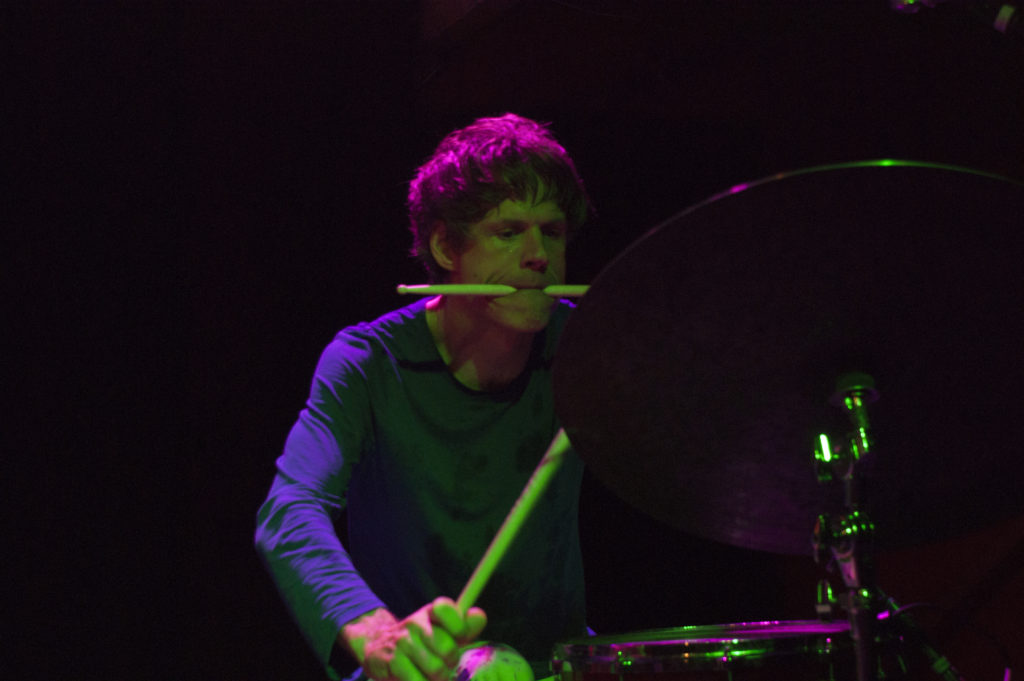
“I know Watt downplays his bass playing saying, ‘Oh, this is for the guitarmen,’ but it’s like, dude, your fucking bass forms are rippers. The way you play bass changed some things in my brain,” Reinhart said. “Learning where he was coming from melodically, that took some practice and a lot of thought. But to me that was one of the most rewarding things out of making the record is learning a new musical language that someone else — a legendary dude — speaks.”
On first listen, Reinhart was unsure of how to approach many of these songs. The first image he conjured for what would become “Rapid Driver Moon Inhaler” was of pirates searching for treasure on the high seas. He was struck by two fears: “One: How do I approach this? Two: I want to be an addition to Mike Watt’s catalog, not a minus,” he said. “I was really conscious about wanting to do this right.” In the recorded version, Reinhart uses whammy and pitch shifter pedals to echo Watt’s original bass line before stretching it to increasingly absurd, Mario-Kart-on-acid type sounds. Cline answers with screeching bends and a standout arpeggiated riff while Saunier fills every inch of space with offbeat snare hits and lightning-fast rolls. The introductory 26 seconds are a succinct summary of a “supergroup” actually meeting its potential.
Cline and Saunier each contributed one song for the album: Cline with the free-jazz inspired “Flare Star Phantom”; Saunier with the opening track, “All Against All.”
Saunier shared a glitchy GarageBand demo of “All Against All” that he made with his computer keyboard days before entering the studio. He called it a miracle that the others were able to understand his intentions in the song. “The demo that I ended up sending them was such a total mess,” he said. “I’m sure they were like, ‘Oh no. Why did we ask a drummer who has no rhythm at all to join this band?’” As the introductory tempo change suggests, Saunier was quickly able to redeem his spot as the rhythm holder. He offered only loose guidance on the song because he wanted each member’s style to stand out. “I didn’t ask anybody to do anything specific with it. I just offered that as some sort of skeletal basis on which everybody decides their own parts.”
“Flare Star Phantom” draws inspiration from John Coltrane’s Stellar Regions and Meditations as well as Cline’s interest in Moroccan street music. “I just wanted to bring in something that was more of a free jazz thing because I know how Watt doesn’t really like just to improvise from the ground up,” he said. “[Watt] likes some structure, and he also loves Coltrane, so I really wanted to do something that really wasn’t going to be a rock piece.”
The result is a nearly nine-minute odyssey that unfurls with the sound of a mad scientist creating a janky space-age contraption. These noises are created by the nearly 30 pedals Cline and Reinhart each used. While the pedals may give Big Walnuts Yonder its breadth of sonic variety, Saunier couldn’t help but laugh at the sight of the overflowing pedalboards with blinking lights and patch cables running in every direction. “When we recorded it looked Guitar Center,” he said. “Each of them had so many pedals in front of them that it just looked like a big joke.”
Cline said people often refer to him as “Mr. Pedals,” a title he understands but doesn’t aspire to own. He refers to his pedals as “sound tools” rather than “tone makers,” which allows him to dial in any sound that comes to mind. Reinhart often uses his pedals to make his guitar sound robotic or otherworldly — like anything but a guitar.
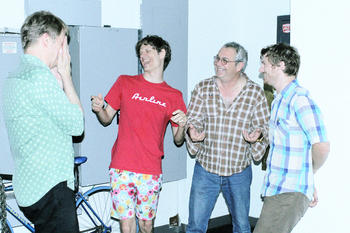
“Playing with Nels was a very, very big moment for me,” Reinhart said. “Just knowing that he’s improvising over these songs with these loose ideas and structured guitar parts — to witness that was like real magic. Actually like a magician in front of you doing something, not supernatural, but like, ‘Whoa, how is this happening right now? How is this guy just pulling this out of thin air?’ That was an incredible thing to witness in person.”
Cline said he was delighted by Reinhart’s art and abilities, but he is not the type to interrupt a session to offer praise.
“[Cline is] a pretty soft-spoken dude,” Reinhart said. “He’s not going to sit there and be like, ‘FUCK! DUDE! THAT SOUND RIGHT THERE! THAT’S THE FUCKING SOUND!’ Anytime I would get a little nod of approval, I would get all flushed and be like, ‘Oh shit; that rules.’”
In contrast to the guitarists maxed-out pedal boards, the rhythm section used barebones setups. Saunier brought only a snare drum, bass drum, ride cymbal and hi-hats; Watt kept to a four string bass plugged directly into the amp. “I’ve just still got more to learn without the pedals,” Watt said. “I’m not even ready for five strings. I’m kind of a slow learner.”
Reinhart said they jammed each song for no more than an hour then hit record, tracking live in the studio. They incorporated minimal overdubs, but Reinhart estimates as much as 90 percent of the album is presented as it was recorded in the studio.
Three years to release
Recorded in July 2014, the album was not released until May 2017. This was due to a handful of factors. Busy schedules again became a roadblock [Author’s note: It took nearly five months to arrange phone interviews with all four members], but a disagreement about including vocals and not knowing who would mix the tapes delayed the release further.
Reinhart insists there are emails as far as a year in advance of recording that discussed including vocals, with the possibility of featuring all four members singing. He said he even shared demos with singing included. “In my memory, it was always going to have vocals on it,” Reinhart said. He thought the bass forms were perfectly written to include vocals, but as the time between formation and recording stretched out, he understands how that idea may have been lost in email chains, or merely forgotten.
“These dudes, they grind. Mike Watt still grinds at his age. [Watt turned 60 in December.] He’s still in the same van, econo style, constantly. That guy doesn’t take breaks,“ Reinhart said. “It’s like, dude. You have a million other records going on right now, you’re constantly playing, so I guess that’s not a shocker that maybe that would have been lost in translation somewhere.”
Cline and Watt both thought the album would be instrumental, and Cline said he was surprised when he learned Reinhart planned to add vocals after the sessions. “We had spent so much time on all these tiny guitar details, and I thought that as an instrumental record it was pretty badass,” Cline said. “But I really am happy with the way it came out now.”
Watt was initially reluctant to add vocals, but he agreed to sing on what would become the early-Clash inspired “Raise the Drawbridges?” and “I Got Marty Feldman Eyes.” Saunier said the vocals add a complementary dimension to the instrumentals, and in Watt’s songs in particular, they were transformed from being somewhat goofy to emotionally riveting. “I am so glad that Nick pushed Watt to do that. Watt’s vocals on those songs to me are so beautiful and really kind of brought me to tears many times,” Saunier said. “They were just so powerful and poignant, but also poetic and his delivery is so intense.”
After the tapes sat for more than a year with only rough studio mixes completed, Saunier decided to take a crack at mixing the album. Familiar with his work as Deerhoof’s producer, the other three hoped Saunier would mix the album from the beginning. He initially declined. “I was kind of scared to do it at first when we had recorded it, and I was like, ‘I don’t want to volunteer to do this.’”
After gaining perspective on the material, he identified the session’s strengths and weaknesses and decided to approach each song as separate projects.
“I didn’t just get a sound for the whole thing and then blanket approach it to all the songs,” Saunier said. “I spent forever on each song and started everything over from scratch each time I started mixing a new song so that the songs tended to sound even more different from each other than they did at the time we recorded them.”
From the driving guitar of “I Got Marty Feldman Eyes” to the slow-burning “Sponge Bath,” the album manages to highlight each musicians’ signature style while also building a sound that is distinct from any of their individual bands.
The road (or lack of) ahead for Big Walnuts Yonder
Since the album’s May release, Saunier and Reinhart have toured in support of new albums with their main bands: Deerhoof with Mountain Moves; Tera Melos with Trash Generator. Watt toured Europe with his Italian band Il Sogno del Marinaio and has gigged across California with various outfits. When asked what Cline was working on, he listed 11 projects, including the always-busy Wilco.
Calling their schedules full would be an understatement. The chances of Big Walnuts Yonder ever performing live or recording again currently lie at slim to none.
“I kind of don’t think it’s ever going to happen,” Cline said. “I’d really have to have a lot of advanced notice to book it, and a lot of time with the stems from the recording sessions to relearn all of those crazy parts.”
Although he said he learned the value of short-term collaboration through this project and called the overall experience total magic, Saunier doubts the group will unite again in any form. “These are just people who are never home,” he said. “When they are, they’ve got all these other five projects, they’re playing on sessions. I put the chances very close to zero. But you never know.”
Watt and Reinhart said they have discussed the prospects of touring and what it would mean for audiences to witness the quartet in person. They remain hopeful that even a limited stretch of shows may be possible.
“I’ll put anything on hold to make this band happen live at some point,” Reinhart said. “For other people to experience what we were experiencing in the room, I think that would be a really special thing.”
“I always love playing with Nels, and, man, it was quite an experience with Greg and Nick Reinhart too, man. And to see how these tunes would go in front of people, that’s another dimension because we never played them for people,” Watt said. “We played them for each other as we were inventing them.”
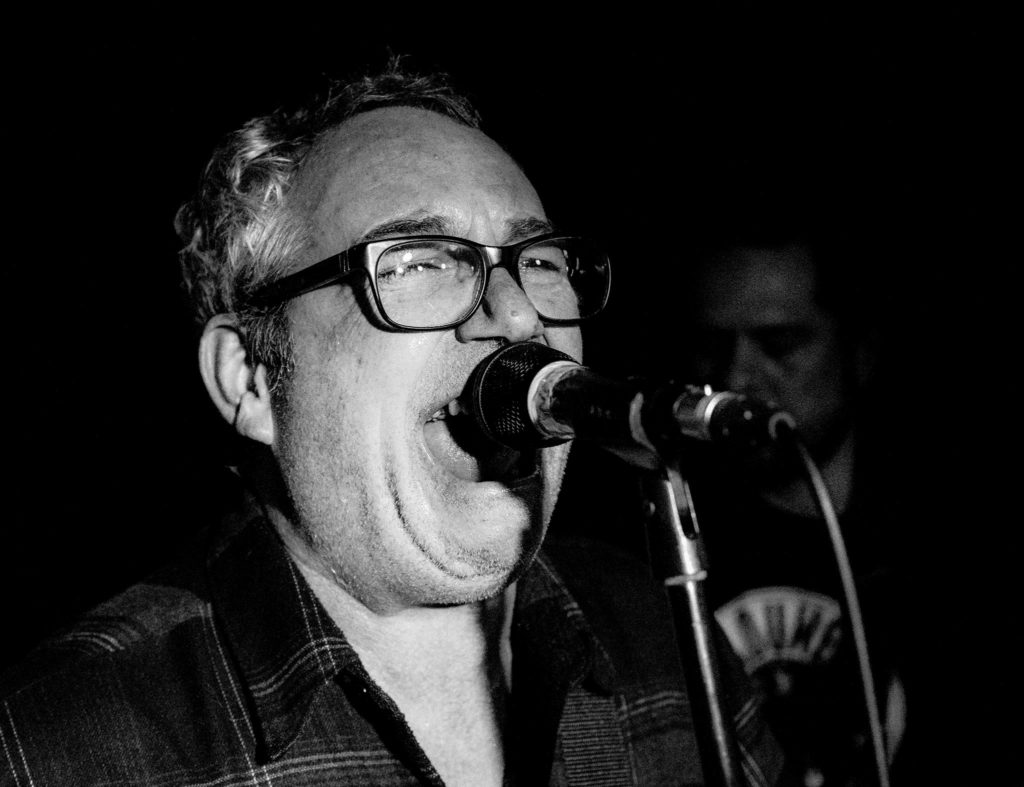
For a group that took years to materialize after an offhand remark about recording together, its legacy is distilled into the three days they spent together creating an album from scratch. It will undoubtedly be remembered as the supergroup that featured Nels Cline, Nick Reinhart, Greg Saunier and Mike Watt, but the songs are (almost) as interesting as the people who made them.
“This wasn’t a band that we grew together and learned how to talk with one another and each other’s perspectives,” Reinhart said. “We were a bunch of dudes who got together and made a record.”
For Watt, who insists he was not born a musician, Big Walnuts Yonder gave him a chance to revisit why he began making music in the first place: the opportunity to work with like-minded friends.
“I liked D. Boon and I wanted to be with him. I want to like the people I’m playing with. And I think it comes out. I don’t know how to quantify it, but if there’s a good personality, somehow it comes out.”
Follow Craig and Split Tooth Media on Twitter
(Split Tooth may earn a commission from purchases made through affiliate links on our site.)

